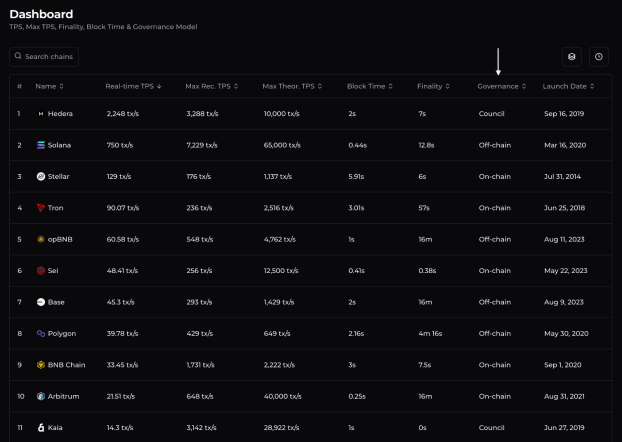Decentralized governance is a key factor for any blockchain. The primary value of a blockchain network lies in its commitment to decentralization, which can only be achieved through a decentralized governance structure.
What is Governance?
Let’s delve into the core concept of governance.
Governance involves the process of making and enforcing decisions within an organization or society. It includes decision-making, rule-setting, and enforcement mechanisms that guide the functioning of the entity.
Why is Governance Crucial for Blockchains?
Blockchain networks are dynamic structures, requiring software updates, fund distribution for marketing and business development, user attraction, and various other activities. All these tasks necessitate decision-making. In this blog post, we’ll explore different governance models, ranging from the more centralized to the decentralized ones.
Models of Blockchain Governance
There are 4 models of blockchain governance:
Multisig
Council
Off-chain governance
On-chain governance
Multisig
Multisig, mirroring the operational structure of private companies, adopts a governance model where a sole entity holds the authority to autonomously modify the fundamental parameters of the blockchain, distribute funds, and redefine the overall strategy. This governance approach is commonly found in certain Layer 2 (L2) networks, offering the ability to pause the network in response to unusual activities such as hacks. However, this model is considered outdated within the blockchain community, primarily due to the potential for the blockchain team to unilaterally alter network parameters or bring it to a standstill.
Council
Council governance mirrors the operational arrangement of boards of directors in traditional web2 companies. It comprises a chosen cohort of organizations or individuals tasked with shaping the blockchain’s future, devising strategies, and allocating funds. This governance model is often employed by emerging blockchains that are yet to transition to community-based governance, whether it be off-chain or on-chain.
Off-chain governance
Off-chain governance represents a style of blockchain governance in which decisions are informally crafted outside the blockchain, often through discussions in social media or forums. Unlike on-chain voting, this form of governance doesn’t mandate the community to decide through on-chain mechanisms. Instead, the outcome is determined by unanimous agreement within the community, gauged through forum activity. In cases of disagreements, there exists the potential for a hard fork of the blockchain, for example, Bitcoin Classic is the hard fork of Bitcoin (you can read more about it here)
On-chain governance
On-chain governance serves as a mechanism empowering decentralized communities to enact updates to a blockchain through direct on-chain voting. The process typically involves the submission of proposals around software update ideas or funding requests, followed by community discussions. Subsequently, on-chain voting takes place, granting users the choice to endorse or reject the proposal by casting votes with their tokens. Certain blockchains go a step further, assigning varying weights to token votes based on the lockup period.
Compare Blockchain Governance
The Chainspect team conducted thorough research to categorize models of blockchain governance, placing each blockchain into one of four categories. The category is shown on the dashboard.

While standardization was pursued, it’s crucial to note that even within the same category, there can be substantial variations in governance structures among different blockchains. We strongly recommend delving deeper into the governance specifics of a particular blockchain if you choose to engage with it.
